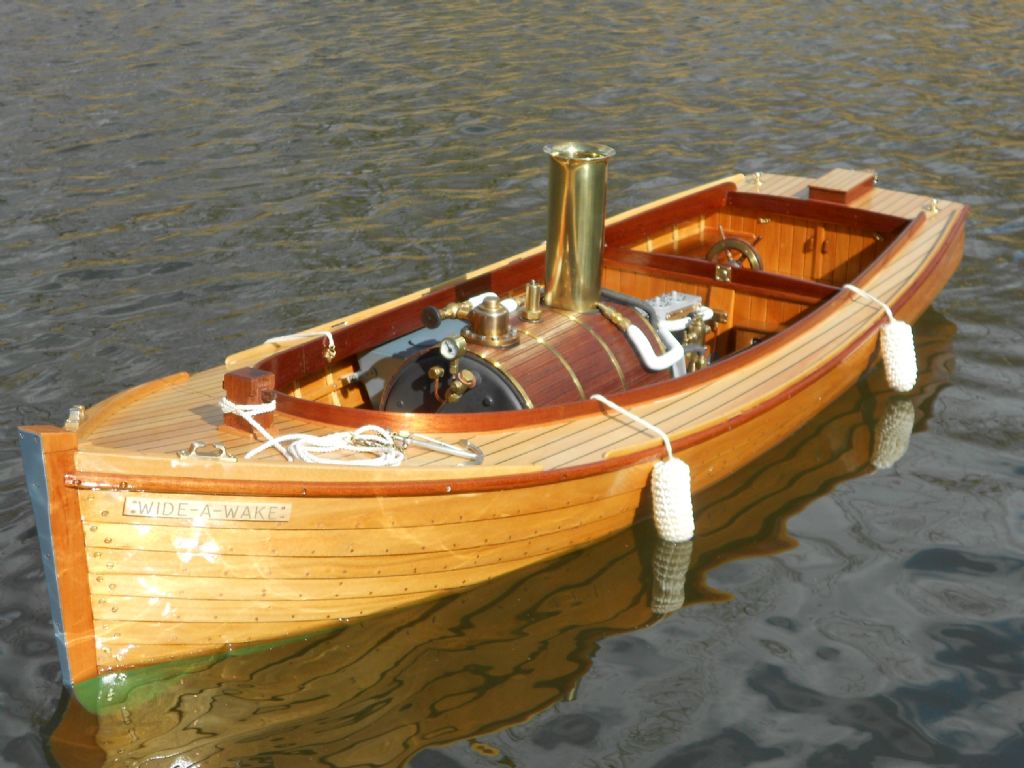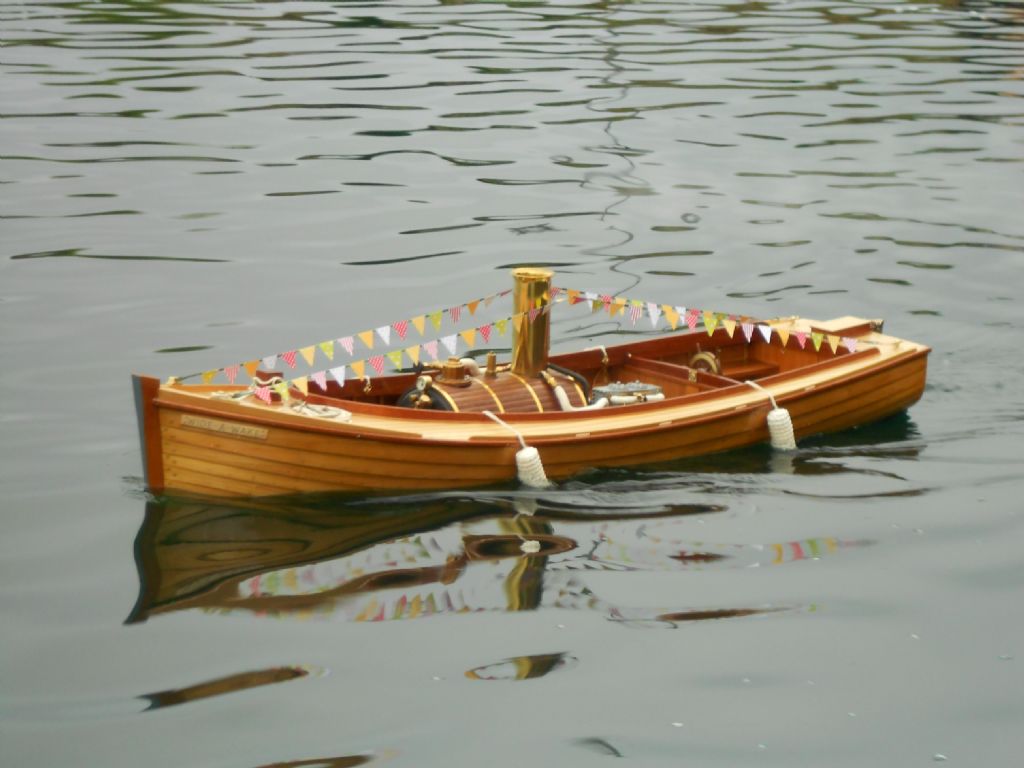Posted by Buffer on 07/12/2020 14:25:06:
Personally I would not even try to do it but ballast it afterwards to get it to float level where you want it.
Bob's concern is that it might not float at all!
What's needed is:
- The volume of the space enclosed by the hull
- The mass of the hull, machinery, and super-structure.
The boat will float provided the volume of water displaced by the hull weighs more than the boat.
As calculating the volume of a curved hull is hard work, I suggest estimating the volume by comparing it roughly to the size of a thin walled plastic kitchen jug, which is about 500ml. Imagine the empty hull. how many jugs could be squeezed in to the space?
Assuming the boat was box shaped:
30" x 7.6" x 6"
is 0.762m x 0.193m x 0.147m
which is 0,0216 cubic metres.
As 1 cubic metre of water weighs 1000kg, the box shaped boat would support a maximum weight of 21.6kg (47.6lbs)
That's the maximum possible, and as a sanity check the jug estimate should be less than that.
Assuming the boat was triangular in cross-section, deck 7.6", with keel 6" below, and 30" long, then
0.0144sqm x 0.762m = 0.011 cubic metres, which is a maximum weight of 10.9kg
As your real boat has pointy ends, and probably has a full bellied mid-section, I guess it's displacement will be roughly between the two, say 16kg (35lbs) with no freeboard. Reducing weight by 25% suggests the maximum weight of the vessel should be less than 12kg (26lbs) Jug guessing should produce a better estimate.
Re Copper vs Fibreglass, it's the weight that matters, not the density. Although Copper is denser than Fibreglass, you would likely use less of it because the hull could can be made thinner. Being used to wood, many people found it difficult to accept Iron ships could float. Actually, they floated better than wooden ships because iron is stronger, and much less of it was needed to make a satisfactory hull. Mild-steel is even better, and warships often used high-tensile steels to save weight, allowing more armour or higher speeds. Can you guestimate how much copper sheet will be used and weigh it. Copper's not a problem provided it's well within the overall weight limit.
The easiest way to get an accurate result is to CAD model the hull because the computer calculates volumes and areas as an aside.
Another way is to create the impression of the hull in clay and fill it to the desired safe water line with water. Each litre amounts to 1kg of weight.
Next issue is stability. To avoid capsizing, heavy weights like the engine, boiler and batteries etch should all be blow the waterline. Everything above the waterline, like the bridge, funnel & masts should be kept light. Shouldn't be difficult because that's how the original was built.
Full size shipwrights have to go an extra step. It's undesirable for all the weight in a ship to be too low because it results in violent rolling and everyone gets sick! By lifting the weight the ship becomes stiffer and rolls less. But not too high, because it risks capsize. Difference between the centre of gravity and the centre of buoyancy. Look up metacentric height if it's of interest. Probably doesn't matter how much a model rolls, and maybe the original had all the weight low down. Tug boats weren't built for crew comfort!
Hope the sums are right – don't forget I'm terrible at maths…
Dave
 Dave Halford.
Dave Halford.





